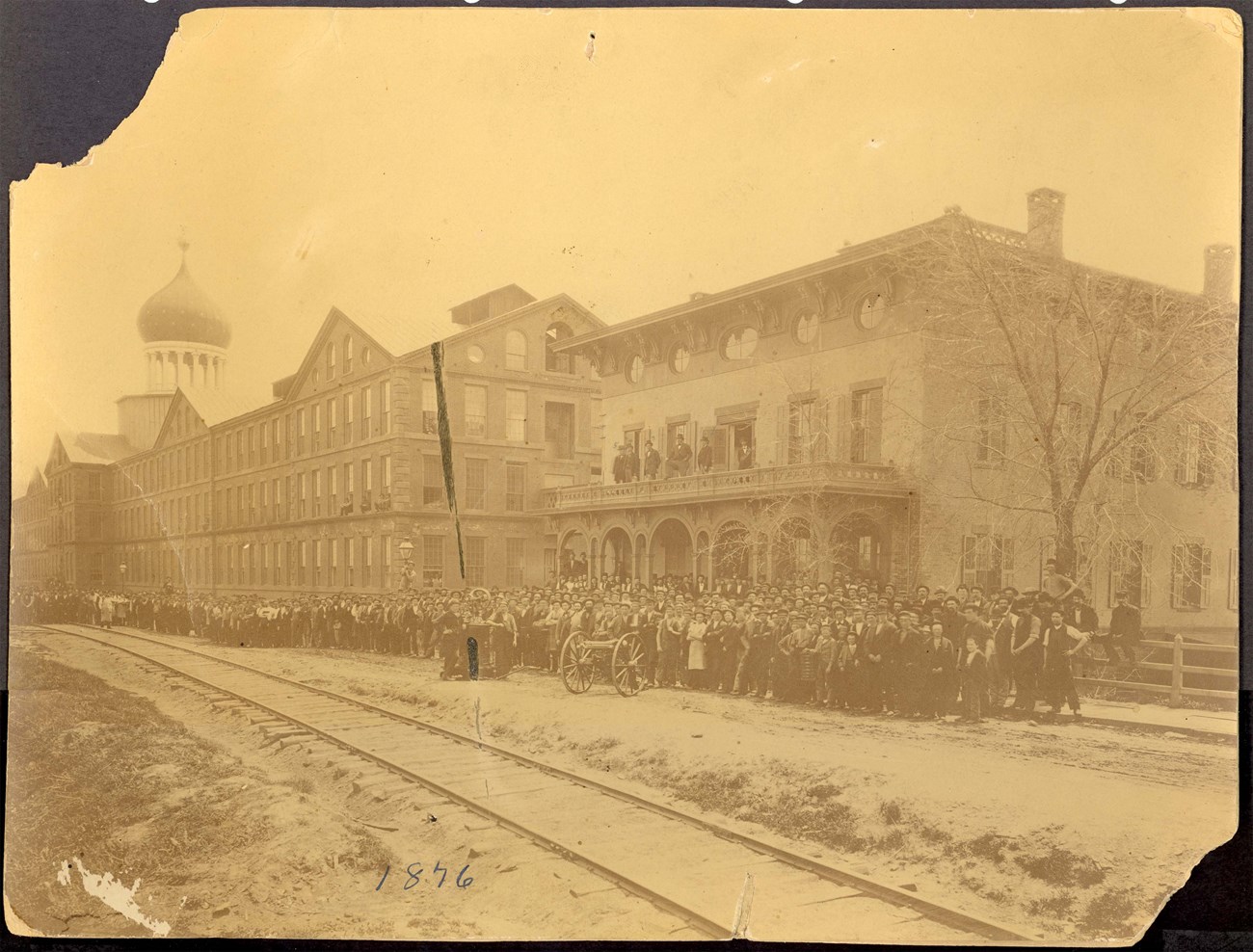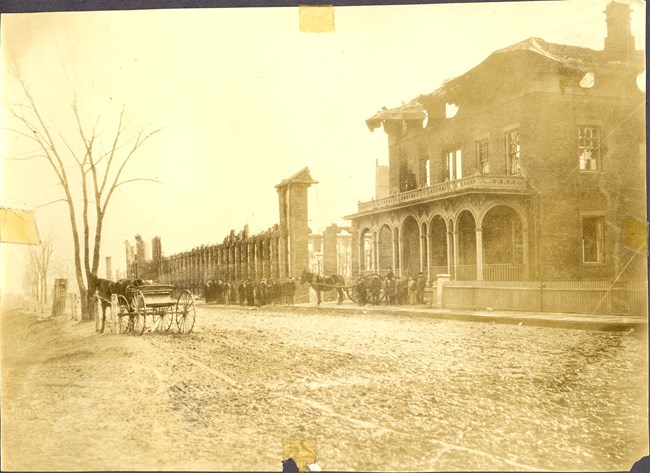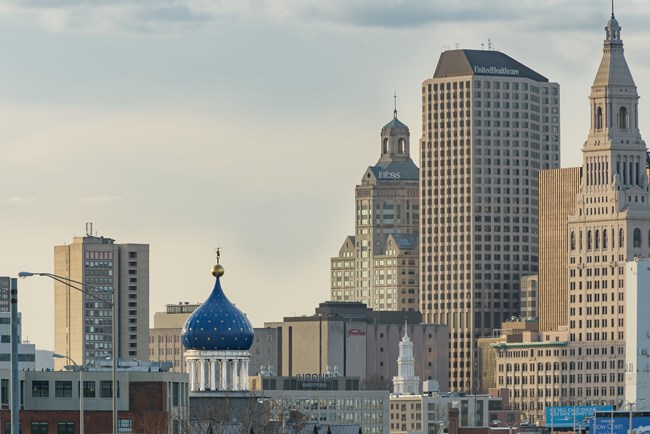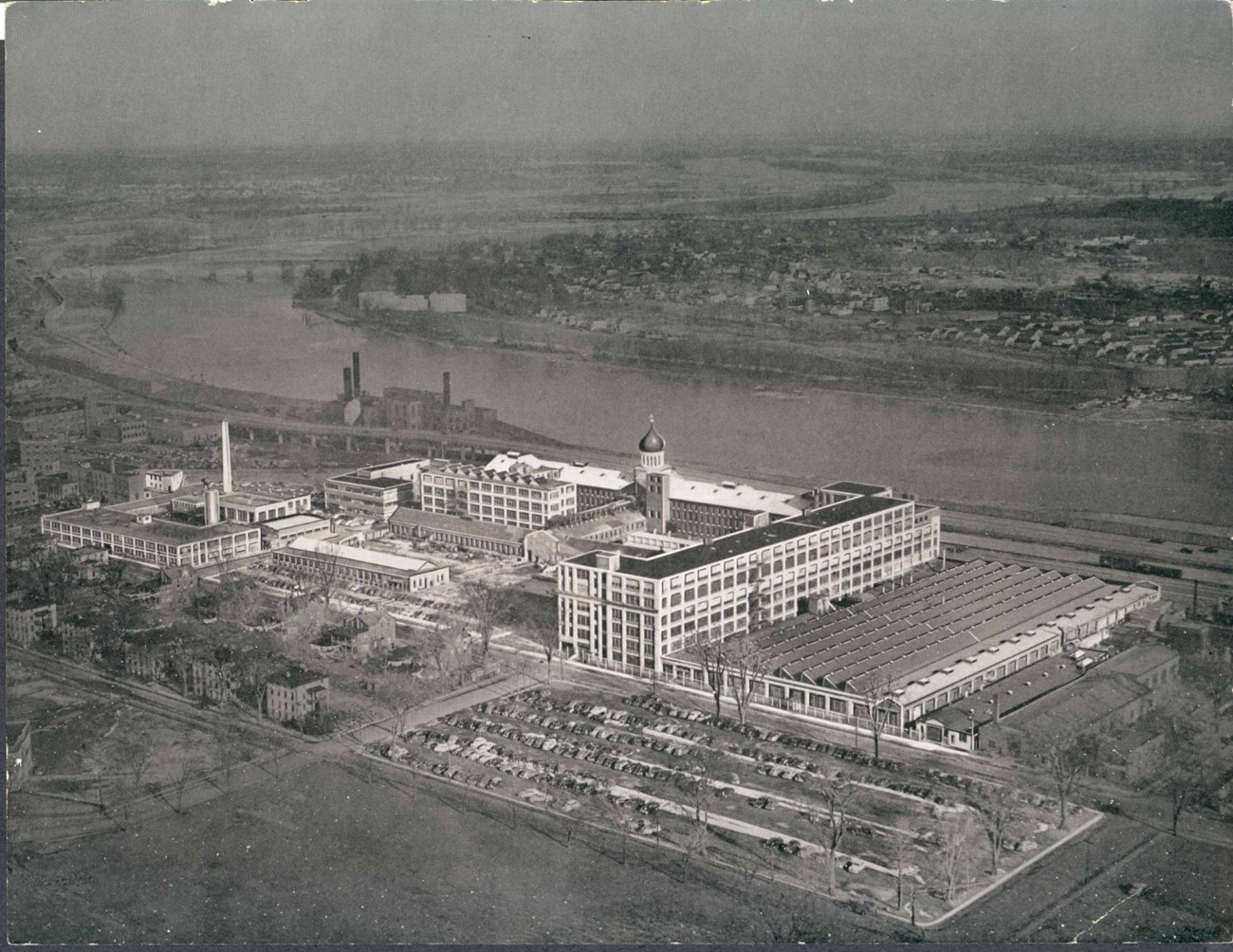|
The East Armory is privately owned and not open to the public.
Please be respectful of the businesses and residents. American industrialist and gunsmith, Samuel Colt, established a successful business developing and creating firearms in Hartford, Connecticut. The Colt’s Patent Firearms Manufacturing Company, located along the Connecticut River, is easily identifiable in the city skyline by the Blue Onion Dome and the gilded Rampant Colt statue that sites atop the East Armory. Colt established his first business, Colt's Patent Arms Manufacturing Company, in the industrial city of Paterson, New Jersey. Aside from firearms, fabrics, paper, and steam locomotives were all built along the Great Falls of the Passaic River. Today this historic site is managed by the National Park Service as Paterson Great Falls National Historical Park. 
Photo Credit: Connecticut State Library Designed by Colt, H.A.G. Pomeroy, and Elisha Root, the earliest armory buildings were completed in 1855. The East Armory was an exceptional building with large windows for natural light, a ventilation system, and gas lighting. The factory became the largest private armament factory in the world for a time. In the years following the company’s founding, Samuel Colt spent the majority of his time perfecting precision machinery, designing and producing new arms, and securing patents and battling infringements upon them. By 1857 workers in the factory produced 150 finished firearms a day! With the onset of the Civil War in 1861, Colt’s business was booming. Samuel received contracts for his Model 1860 Army Revolver and 1860 Navy Revolver, among others, for the Union Army. Only one year into the war, Samuel unexpectedly passed away on January 10th, 1862. Elizabeth Hart Jarvis Colt, his wife, gained controlling interest in the company and Samuel's close partner, Elisha K. Root, was selected as President. For the next two years, they successfully navigated running a business during the war. 
Photo Credit: Connecticut State Library
The Hartford Courant, February 6th, 1864
Over half of the factory burned to the ground with damage estimated around 2 million dollars as reported by the Hartford Daily Courant. Elizabeth having foresight, had taken out an insurance policy, but it didn’t cover half of the cost to rebuild. Samuel, himself, had refused to buy insurance on the Armory, which was ironic given Hartford, even at the time, had numerous insurance agencies. Elizabeth oversaw the rebuilding of the factory honoring Samuel’s original design, but adding an additional story and fireproof measures. Colt’s Patent Firearms Manufacturing Company persevered through misfortune and the Blue Onion Dome and the Rampant Colt once again rose above Harford.

Photo Credit: NPS/Nick Caito Used equally as a marketing tool and a call for recognition, the dome and the Rampant Colt statue remain a pivotal part of the Colt legacy. Even today, Hartford residents know the East Armory structure as “Colt’s Dome” or “Colt’s Factory,” effectively keeping the man, the myth, and the legend alive just as he likely hoped it would. Today, the East Armory is owned by Colt Gateway, LLC and is leased out as office space and apartments. Other buildings contain an art academy, the office of a United States Senator, a cafe, and software development company. Colt’s Patent Firearms Manufacturing Company, renamed Colt’s Manufacturing Company, LLC, remains in business today, with the headquarters located in West Hartford. In 1976 the East Armory was a designated as a contributing building to the Colt Industrial District. In 2008 the Coltsville Historic District was designated a National Historic Landmark District. In 2014 the United States Congress authorized the creation of the Coltsville National Historical Park. 
Photo Credit: Connecticut State Library |
Last updated: April 26, 2022
